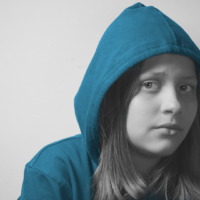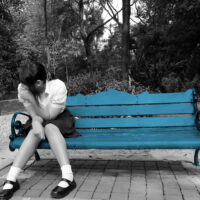Search results
-

Self-Harm & Suicide Issue – Foreword from the Editor
As a clinician, it certainly does feel that more and more young people are being referred, following self harm or with suicidal ideas, to the CAMHS service I work in. This nationwide increase in numbers is acknowledged in recent government reports, which are summarised in this edition.
Read more -

Self-harm & Suicide
Self-harm is an increasingly recognised phenomenon and one of the strongest predictors of suicide, which continues to be one of the leading causes of death in young people worldwide. Self-harm can take many forms and may present with or without suicidal intent and both in the context of mental disorder, and without.
Read more -

Research Review: Autonomic dysregulation and self-injurious thoughts and behaviours in children and young people: A systematic review and meta-analysis
Open Access paper from JCPP Advances – ‘Self-injurious thoughts and behaviours (SITBs) have been associated with dysfunction of the Autonomic Nervous System (ANS) in children and young people, suggesting that objective ANS measures may aid assessment of suicide risk, but a systematic synthesis of this literature is currently lacking.’ Alessio Bellato (pic) et al.
Read more -

Self-harm & Self-Injury – Episode. 9 ‘Autism a parents guide’
For this podcast, focusing on autistic children who harm themselves, we are joined by Dr. Ann Ozsivadjian, and Dr. Penny Williams. This podcast is supported by Clinical Partners.
Read more -

Individual changes in stress-level predict non-suicidal self-injury
In their latest study, Adam Miller and colleagues propose that these inconsistencies might be due to a reliance on “between-person” models that compare individuals with high stress levels to those with low stress levels.
Read more -

The family environment mediates risk of self-harming
Non-suicidal self-injury (NSSI) constitutes any deliberate physical injury to oneself that is not life-threatening. It is a behaviour that commonly starts during adolescence. Childhood family adversity (CFA) is associated with NSSI, but the risk pathways between CFA and NSSI are unclear.
Read more -

‘Suicide and self-harm; The Research, The Evidence, The Interventions’ Emanuel Miller Memorial International Online Conference
Bookings closed. A critical topic that all those working in the field of child and adolescent mental health should know about. Learn about the latest research, the different types of interventions, and the evidence base that supports this.
- Event type
- Emanuel Miller International Conference
- Location
- LIVE STREAM
-

Addressing self-harm in schools, a priority for all – FREE
This event is now at capacity. For information about the next in this series please sign up to our newsletter. These FREE sessions are an absolute must for those working in an educational setting. Practical, evidence-based examples and advice from world-leading experts.
- Event type
- Live Stream
- Location
- LIVE STREAM
-

Dr. Joan Asarnow
Dr. Joan Asarnow is a Professor of Psychiatry and Biobehavioral Sciences at UCLA and Director of a SAMHSA-funded Center for Trauma-Informed Suicide, Self-Harm, and Substance Abuse Treatment and Prevention (ASAP Center, with Co-Director Dr. David-Goldston) which offers trainings, consultation, and technical assistance on trauma-informed approaches to evaluation and treatment for reducing suicide and self-harm risk.
Read more -

DBT-A can enhance emotion regulation in ethnic minority youth
Ethnic minority youth often experience environmental and culturally relevant stressors, putting them at risk of developing self-regulation difficulties and engaging in self-harm.
Read more
